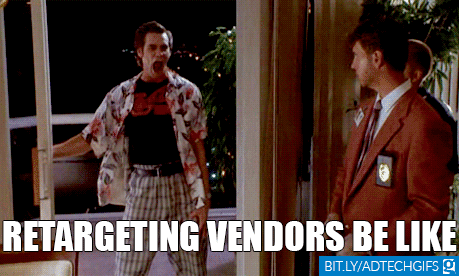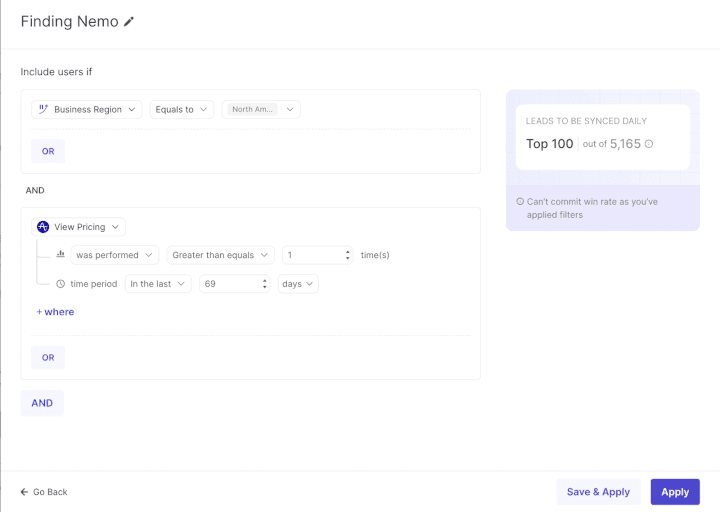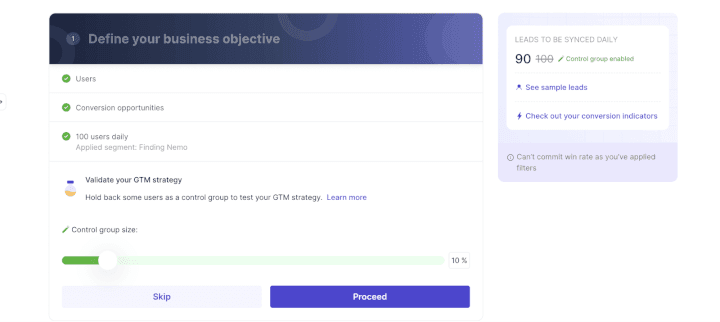Lead Nurturing Stages: The Art of Converting Leads
Lead Nurturing Stages: The Art of Converting Leads
Lead Nurturing Stages: The Art of Converting Leads
Explore the different lead nurturing stages and discover strategies, tips, and the ultimate tool for converting prospects into loyal customers.
Explore the different lead nurturing stages and discover strategies, tips, and the ultimate tool for converting prospects into loyal customers.
Explore the different lead nurturing stages and discover strategies, tips, and the ultimate tool for converting prospects into loyal customers.



Lead nurturing stages are like qualifying rounds of a talent show, where contestants are evaluated before they are deemed fit for the final performance.
In the SaaS world, understanding the different lead nurturing stages can help you:
Identify which stage your prospect is at in the buyer’s journey 🔎
Accelerate your sales process by providing your leads with valuable content and information they need to purchase ⏩
But what does lead nurturing mean, and why is it essential?
More importantly, what are the different lead nurturing stages?
This post will explore lead nurturing in detail, including six trusted strategies and five best practices for creating successful lead nurturing campaigns.
We'll also introduce you to the ultimate tool to help you identify, qualify, and maximize your lead nurturing efforts across the buyer’s journey.
Let’s get this show on the road.

What Is Lead Nurturing, and Why Is It Essential?
Lead nurturing means keeping your leads tuned in through every sales funnel stage.

It’s about anticipating the needs and challenges of your leads across different stages of your sales process.
But that’s not all!
A successful lead nurturing process is about delighting prospects with valuable content and personalized messaging.
Doing so can help your SaaS company:
Increase brand awareness and the prospect's likelihood of becoming a paying customer.
Keep existing customers engaged and satisfied, resulting in long-term revenue growth 🤑
Prioritize high-quality leads, thereby reducing wasted time and resources on unqualified leads.
Gain valuable data and insights into customer needs, pain points, and behaviors, helping you optimize your product, marketing, and sales strategies.
But here’s the thing:
To develop a successful lead nurturing strategy across the sales cycle, you must first generate, score, qualify, and track high-quality leads.

Let's find out what these terms mean.
Lead Generation, Scoring, Qualification, and Tracking: What’s the Difference?
Lead generation, scoring, qualification, and tracking are all critical aspects of the lead nurturing process, but they have different functions and objectives 🎯
Here's a brief overview:
Lead generation: Creating and capturing interest and contact information from individuals who can be retargeted via your lead nurturing campaign.
Note: Demand generation aims to create awareness and interest in your business, products, or services and occurs before lead generation.
Lead scoring: Assigning a numerical value or score to each lead based on their behavior and characteristics, like job title, product usage, website visits, etc.
Lead qualification: Segmenting and prioritizing leads based on budget, authority, need, and timing.
Lead tracking: Collecting and analyzing a lead’s product usage and other engagement data, like filling out a form or downloading other marketing collateral.
Now that we understand the different aspects of a lead nurturing strategy, let's dive into the sales funnel and understand the different stages better.

What Are the Different Lead Nurturing Stages?
Lead nurturing stages can vary depending on the sales cycle and the organization's digital marketing strategy.
Different strokes for different folks! 🤷
However, the standard lead nurturing strategy typically involves the following stages:
1. Marketing-Qualified Leads (MQLs)
These leads have recently engaged with your digital marketing efforts by visiting your website or landing page.
Or they've downloaded certain marketing materials or responded to content offers or call-to-action buttons (CTA).
While these are great signs, not every marketing qualified lead will convert into a paying customer.
So marketers need to capture the lead's information and retarget them via social media, email marketing campaigns, etc., to guide them to the next stage in the buyer journey.

2. Sales-Qualified leads (SQLs)
Nurtured leads who show strong interest in your SaaS company's product or service are sales-qualified.
These leads clearly understand your product or service and how they can benefit from it.
But how do you differentiate a sales qualified lead from a marketing qualified lead?
It’s simple, SQLs typically have:
Provided personal information via an opt-in form or another marketing channel.
A sense of urgency and actively seeking a solution.
The budget and authority to purchase your product.
At this stage in the customer journey, your nurturing tactics should be about sending personalized messages and providing content that addresses their pain points.
3. Product-Qualified Leads (PQLs)
PQLs are leads who’ve used your product and experienced the "Aha moment."
It’s the moment when a prospective customer derives meaningful value from your product or service 🥰
At this stage, you should segment leads based on company goals, target markets, etc. You should also ensure your sales reps reach out and stay in touch with them.
Additionally, you could send lead nurturing emails or in-product messages. But above all, you need to ensure you offer a fantastic onboarding experience to help them get the most out of your product.
4. Sales-Qualified Opportunities (SQOs)
SQOs are leads who are practically ready to purchase.

Even better, SQOs are leads who've communicated and established a meaningful relationship with a sales rep or sales team.
They only need to finalize the details.
Here, you’ll need to:
Formulate a customized proposal and address customer concerns.
Demonstrate how your product or service solves problems via a demo and close the sale.
A word of caution: It's essential to have a well-defined and consistent qualification process to avoid investing resources into opportunities that may not result in a successful deal.
5. Purchase
The final lead nurturing stage involves converting leads into paying customers and building long-term customer relationships.
But, even at this stage, you require a well-thought-out lead nurturing strategy.
Here, your sales reps must:
Negotiate prices, discounts, or other terms of the sale.
Provide any necessary documentation or access to the purchased product or service.
Proper handling of the purchase and post-purchase stage helps create brand advocates, driving business growth through positive referrals.
Bottom line: With the best lead nurturing practices and strategies, you can effectively guide leads through different buyer journey stages.
Let’s explore these strategies in more detail.
Five Trusted Lead Nurturing Strategies to Boost Conversions
SaaS companies can deploy several strategies to cultivate and nurture customer relationships.
Here are six tried and tested ones:
1. Personalized Messaging
Whether you’re a B2B or B2C SaaS company, tailoring your communication to the needs and preferences of each prospect helps build overall brand awareness and trust.

One way you can send personalized messages is via email marketing.
Here are some ways to personalize your email marketing campaign:
Segment or score your leads based on their interests, behavior, and buying stage.
Use the data collected from these customer segments to deliver relevant and timely communication.
Address your leads by their name.
Keep the tone friendly yet professional.
Use marketing automation to keep communication consistent.
2. Content Marketing
Before you create any content, it's essential to understand your audience and what they're looking for 🫣
Develop a buyer persona and conduct customer research to identify key pain points, challenges, and interests.
Once you know what your audience is looking for, create content that addresses their needs and provides value, such as blog posts, whitepapers, eBooks, webinars, and more.
If you want to capture the lead's information, use gated content marketing that asks users for their contact information to access it.
3. Social Media Marketing
Let’s face it — if people are online, they’re on social media 🤷
But remember:
Different social media platforms appeal to different demographics. So knowing where your target audience is most active helps focus your efforts on engaging them.
Additionally, responding promptly to comments, messages, and mentions helps build rapport with a potential lead.
It keeps the conversation going and humanizes your brand.
4. Webinars and Events
Webinars and events work well when educating your leads on complex topics, such as industry trends and best practices or specific features and benefits of your software.
But there’s bad news!

While webinars and events are very effective lead nurturing tools, they can also be challenging to execute successfully.
Why?
SaaS companies will need to invest time and resources in developing engaging content, promoting the event, managing technical issues, and keeping the audience engaged.
5. Retargeting
The truth is, the majority of the leads that visit your website or app aren't going to convert immediately 🤷
And that’s where retargeting (AKA remarketing) comes into the picture!
Simply put, it involves targeting leads who leave your website or app without converting.

Here’s what your sales and marketing teams need to do to implement a successful retargeting strategy:
Use website tracking tools like Google or Facebook Analytics to identify and target individuals who have engaged with your website or brand but have yet to convert.
Develop relevant content or ads that speak to their needs and interests. For example, if a lead spent time reading about a particular product or feature, you could show them ads highlighting its benefits.
Use metrics such as click-through rates, conversion rates, and cost per conversion to evaluate the success of your campaign and make adjustments as needed.
How to develop a strong lead nurturing campaign?

Five Best Practices for Creating a Successful Lead Nurturing Campaign
Successful lead nurturing campaigns require careful planning, execution, and optimization.
Here are five crucial steps:
Define your lead nurturing campaign goals: Set SMART goals (specific, measurable, achievable, relevant, and time-bound) so you can track progress, make data-driven decisions, and adjust your strategy as needed.
Qualify and segment your leads: Prioritize them based on their engagement level and purchase readiness.
For example, someone who has visited your pricing page multiple times and signed up for a free trial may be more ready to buy than someone who has just heard of your company.
Test, monitor, and optimize: Identify your SaaS KPIs (Key Performance Indicators), test your lead nurturing process, and analyze results to gather customer insights.
Follow up with leads diligently: Reach out to leads and address their challenges and concerns promptly and effectively. For example, if there’s a drop in usage during a free trial, marketers or sales reps can reach out to find out why and help resolve the issue.
Use marketing automation: Save time and resources by automating repetitive tasks like sending lead nurturing emails or social media messages.
Easy?
Let’s be honest: Executing an effective lead nurturing campaign without a lead management system can make you want to bang your head against the wall.
Thankfully, you can do all this and more with a headless AI tool like Toplyne.

Identify, Qualify, and Nurture the Most Promising Leads with Toplyne
Each lead nurturing stage needs to be carefully choreographed to guide a potential customer toward becoming your brand advocate.
But we understand doing all of this manually is almost unimaginable.
For that, you need a robust tool to help you effectively identify and qualify leads and nurture them across different stages.
And that’s where Toplyne comes in.
Toplyne is a one-of-a-kind tool that uses behavioral scoring and advanced segmentation to build a smooth pipeline of product-qualified leads.
The best part?
You can quickly identify conversion and expansion opportunities, significantly boosting your win and net revenue retention (NRR) rates.
Let us show you how it’s done:
Step 1: Create a monetization playbook to help you identify the most promising leads.

Step 2: Pick between individual or group users within an organization.

Step 3: Determine the frequency at which you want nurtured leads and non nurtured leads synced in your GTM apps.

Step 4: Define the number of leads or expected win rate you want every week.

Step 5: Build custom segments based on specific actions or behavior.

Step 6: Test and validate your GTM strategy.

Step 7: Sync your sales pipeline with your CRMs, sales & marketing execution tools, and customer engagement platforms.

Master the Art of Lead Nurturing with Toplyne
To convert leads into loyal customers, you’ll need to nurture them effectively across different stages of your customer journey.
But first, you’ll need to generate high-quality leads!
Then, you'll need to qualify and segment them based on their respective lead scores and track all critical components of the lead nurturing process.
Already breaking a sweat?
Fortunately, with a headless sales AI tool like Toplyne, you can quickly filter and nurture leads most likely to convert, saving time and resources.
More importantly, it’ll transform you and your sales team into lead nurturing masters.
Sign up for free with Toplyne right now, and master the art of lead nurturing!

Lead nurturing stages are like qualifying rounds of a talent show, where contestants are evaluated before they are deemed fit for the final performance.
In the SaaS world, understanding the different lead nurturing stages can help you:
Identify which stage your prospect is at in the buyer’s journey 🔎
Accelerate your sales process by providing your leads with valuable content and information they need to purchase ⏩
But what does lead nurturing mean, and why is it essential?
More importantly, what are the different lead nurturing stages?
This post will explore lead nurturing in detail, including six trusted strategies and five best practices for creating successful lead nurturing campaigns.
We'll also introduce you to the ultimate tool to help you identify, qualify, and maximize your lead nurturing efforts across the buyer’s journey.
Let’s get this show on the road.

What Is Lead Nurturing, and Why Is It Essential?
Lead nurturing means keeping your leads tuned in through every sales funnel stage.

It’s about anticipating the needs and challenges of your leads across different stages of your sales process.
But that’s not all!
A successful lead nurturing process is about delighting prospects with valuable content and personalized messaging.
Doing so can help your SaaS company:
Increase brand awareness and the prospect's likelihood of becoming a paying customer.
Keep existing customers engaged and satisfied, resulting in long-term revenue growth 🤑
Prioritize high-quality leads, thereby reducing wasted time and resources on unqualified leads.
Gain valuable data and insights into customer needs, pain points, and behaviors, helping you optimize your product, marketing, and sales strategies.
But here’s the thing:
To develop a successful lead nurturing strategy across the sales cycle, you must first generate, score, qualify, and track high-quality leads.

Let's find out what these terms mean.
Lead Generation, Scoring, Qualification, and Tracking: What’s the Difference?
Lead generation, scoring, qualification, and tracking are all critical aspects of the lead nurturing process, but they have different functions and objectives 🎯
Here's a brief overview:
Lead generation: Creating and capturing interest and contact information from individuals who can be retargeted via your lead nurturing campaign.
Note: Demand generation aims to create awareness and interest in your business, products, or services and occurs before lead generation.
Lead scoring: Assigning a numerical value or score to each lead based on their behavior and characteristics, like job title, product usage, website visits, etc.
Lead qualification: Segmenting and prioritizing leads based on budget, authority, need, and timing.
Lead tracking: Collecting and analyzing a lead’s product usage and other engagement data, like filling out a form or downloading other marketing collateral.
Now that we understand the different aspects of a lead nurturing strategy, let's dive into the sales funnel and understand the different stages better.

What Are the Different Lead Nurturing Stages?
Lead nurturing stages can vary depending on the sales cycle and the organization's digital marketing strategy.
Different strokes for different folks! 🤷
However, the standard lead nurturing strategy typically involves the following stages:
1. Marketing-Qualified Leads (MQLs)
These leads have recently engaged with your digital marketing efforts by visiting your website or landing page.
Or they've downloaded certain marketing materials or responded to content offers or call-to-action buttons (CTA).
While these are great signs, not every marketing qualified lead will convert into a paying customer.
So marketers need to capture the lead's information and retarget them via social media, email marketing campaigns, etc., to guide them to the next stage in the buyer journey.

2. Sales-Qualified leads (SQLs)
Nurtured leads who show strong interest in your SaaS company's product or service are sales-qualified.
These leads clearly understand your product or service and how they can benefit from it.
But how do you differentiate a sales qualified lead from a marketing qualified lead?
It’s simple, SQLs typically have:
Provided personal information via an opt-in form or another marketing channel.
A sense of urgency and actively seeking a solution.
The budget and authority to purchase your product.
At this stage in the customer journey, your nurturing tactics should be about sending personalized messages and providing content that addresses their pain points.
3. Product-Qualified Leads (PQLs)
PQLs are leads who’ve used your product and experienced the "Aha moment."
It’s the moment when a prospective customer derives meaningful value from your product or service 🥰
At this stage, you should segment leads based on company goals, target markets, etc. You should also ensure your sales reps reach out and stay in touch with them.
Additionally, you could send lead nurturing emails or in-product messages. But above all, you need to ensure you offer a fantastic onboarding experience to help them get the most out of your product.
4. Sales-Qualified Opportunities (SQOs)
SQOs are leads who are practically ready to purchase.

Even better, SQOs are leads who've communicated and established a meaningful relationship with a sales rep or sales team.
They only need to finalize the details.
Here, you’ll need to:
Formulate a customized proposal and address customer concerns.
Demonstrate how your product or service solves problems via a demo and close the sale.
A word of caution: It's essential to have a well-defined and consistent qualification process to avoid investing resources into opportunities that may not result in a successful deal.
5. Purchase
The final lead nurturing stage involves converting leads into paying customers and building long-term customer relationships.
But, even at this stage, you require a well-thought-out lead nurturing strategy.
Here, your sales reps must:
Negotiate prices, discounts, or other terms of the sale.
Provide any necessary documentation or access to the purchased product or service.
Proper handling of the purchase and post-purchase stage helps create brand advocates, driving business growth through positive referrals.
Bottom line: With the best lead nurturing practices and strategies, you can effectively guide leads through different buyer journey stages.
Let’s explore these strategies in more detail.
Five Trusted Lead Nurturing Strategies to Boost Conversions
SaaS companies can deploy several strategies to cultivate and nurture customer relationships.
Here are six tried and tested ones:
1. Personalized Messaging
Whether you’re a B2B or B2C SaaS company, tailoring your communication to the needs and preferences of each prospect helps build overall brand awareness and trust.

One way you can send personalized messages is via email marketing.
Here are some ways to personalize your email marketing campaign:
Segment or score your leads based on their interests, behavior, and buying stage.
Use the data collected from these customer segments to deliver relevant and timely communication.
Address your leads by their name.
Keep the tone friendly yet professional.
Use marketing automation to keep communication consistent.
2. Content Marketing
Before you create any content, it's essential to understand your audience and what they're looking for 🫣
Develop a buyer persona and conduct customer research to identify key pain points, challenges, and interests.
Once you know what your audience is looking for, create content that addresses their needs and provides value, such as blog posts, whitepapers, eBooks, webinars, and more.
If you want to capture the lead's information, use gated content marketing that asks users for their contact information to access it.
3. Social Media Marketing
Let’s face it — if people are online, they’re on social media 🤷
But remember:
Different social media platforms appeal to different demographics. So knowing where your target audience is most active helps focus your efforts on engaging them.
Additionally, responding promptly to comments, messages, and mentions helps build rapport with a potential lead.
It keeps the conversation going and humanizes your brand.
4. Webinars and Events
Webinars and events work well when educating your leads on complex topics, such as industry trends and best practices or specific features and benefits of your software.
But there’s bad news!

While webinars and events are very effective lead nurturing tools, they can also be challenging to execute successfully.
Why?
SaaS companies will need to invest time and resources in developing engaging content, promoting the event, managing technical issues, and keeping the audience engaged.
5. Retargeting
The truth is, the majority of the leads that visit your website or app aren't going to convert immediately 🤷
And that’s where retargeting (AKA remarketing) comes into the picture!
Simply put, it involves targeting leads who leave your website or app without converting.

Here’s what your sales and marketing teams need to do to implement a successful retargeting strategy:
Use website tracking tools like Google or Facebook Analytics to identify and target individuals who have engaged with your website or brand but have yet to convert.
Develop relevant content or ads that speak to their needs and interests. For example, if a lead spent time reading about a particular product or feature, you could show them ads highlighting its benefits.
Use metrics such as click-through rates, conversion rates, and cost per conversion to evaluate the success of your campaign and make adjustments as needed.
How to develop a strong lead nurturing campaign?

Five Best Practices for Creating a Successful Lead Nurturing Campaign
Successful lead nurturing campaigns require careful planning, execution, and optimization.
Here are five crucial steps:
Define your lead nurturing campaign goals: Set SMART goals (specific, measurable, achievable, relevant, and time-bound) so you can track progress, make data-driven decisions, and adjust your strategy as needed.
Qualify and segment your leads: Prioritize them based on their engagement level and purchase readiness.
For example, someone who has visited your pricing page multiple times and signed up for a free trial may be more ready to buy than someone who has just heard of your company.
Test, monitor, and optimize: Identify your SaaS KPIs (Key Performance Indicators), test your lead nurturing process, and analyze results to gather customer insights.
Follow up with leads diligently: Reach out to leads and address their challenges and concerns promptly and effectively. For example, if there’s a drop in usage during a free trial, marketers or sales reps can reach out to find out why and help resolve the issue.
Use marketing automation: Save time and resources by automating repetitive tasks like sending lead nurturing emails or social media messages.
Easy?
Let’s be honest: Executing an effective lead nurturing campaign without a lead management system can make you want to bang your head against the wall.
Thankfully, you can do all this and more with a headless AI tool like Toplyne.

Identify, Qualify, and Nurture the Most Promising Leads with Toplyne
Each lead nurturing stage needs to be carefully choreographed to guide a potential customer toward becoming your brand advocate.
But we understand doing all of this manually is almost unimaginable.
For that, you need a robust tool to help you effectively identify and qualify leads and nurture them across different stages.
And that’s where Toplyne comes in.
Toplyne is a one-of-a-kind tool that uses behavioral scoring and advanced segmentation to build a smooth pipeline of product-qualified leads.
The best part?
You can quickly identify conversion and expansion opportunities, significantly boosting your win and net revenue retention (NRR) rates.
Let us show you how it’s done:
Step 1: Create a monetization playbook to help you identify the most promising leads.

Step 2: Pick between individual or group users within an organization.

Step 3: Determine the frequency at which you want nurtured leads and non nurtured leads synced in your GTM apps.

Step 4: Define the number of leads or expected win rate you want every week.

Step 5: Build custom segments based on specific actions or behavior.

Step 6: Test and validate your GTM strategy.

Step 7: Sync your sales pipeline with your CRMs, sales & marketing execution tools, and customer engagement platforms.

Master the Art of Lead Nurturing with Toplyne
To convert leads into loyal customers, you’ll need to nurture them effectively across different stages of your customer journey.
But first, you’ll need to generate high-quality leads!
Then, you'll need to qualify and segment them based on their respective lead scores and track all critical components of the lead nurturing process.
Already breaking a sweat?
Fortunately, with a headless sales AI tool like Toplyne, you can quickly filter and nurture leads most likely to convert, saving time and resources.
More importantly, it’ll transform you and your sales team into lead nurturing masters.
Sign up for free with Toplyne right now, and master the art of lead nurturing!

Related Articles




Behavioral Retargeting: A Game-Changer in the Cookieless Era
Unlock the power of behavioral retargeting for the cookieless future! Learn how it personalizes ads & boosts conversions. #behavioralretargeting




All of Toplyne's 40+ Badges in the G2 Spring Reports
Our customers awarded us 40+ badges in G2's Summer Report 2024.




Unlocking the Full Potential of Google PMax Campaigns: Mastering Audience Selection to Double Your ROAS
Copyright © Toplyne Labs PTE Ltd. 2024
Copyright © Toplyne Labs PTE Ltd. 2024
Copyright © Toplyne Labs PTE Ltd. 2024
Copyright © Toplyne Labs PTE Ltd. 2024